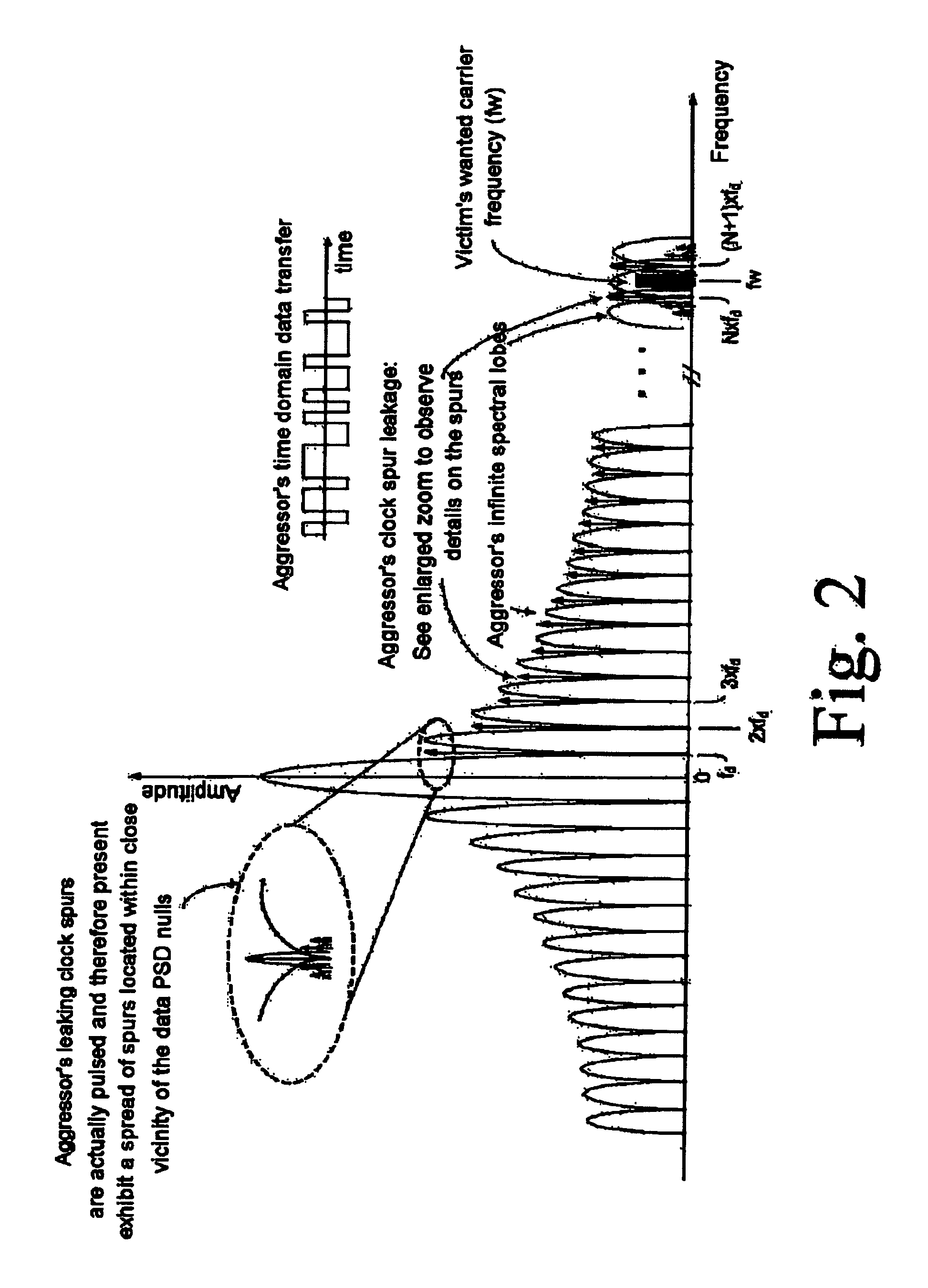Process and Apparatus for Reducing EMI in the RF Subsystem of a Wireless Communication System
a wireless communication system and subsystem technology, applied in the field of wireless communication, can solve the problems of increasing the design and manufacturing costs of the transceiver, reducing the service life of the rf receiver, and not allowing to avoid desensitization of the receiver, so as to facilitate the cellular integration
- Summary
- Abstract
- Description
- Claims
- Application Information
AI Technical Summary
Benefits of technology
Problems solved by technology
Method used
Image
Examples
Embodiment Construction
[0054]It will now be described how one can improve the integration of digital baseband systems and circuits with one or more RF subsystem. Clearly, the method and system being described hereinafter are particularly suitable for the purpose of designing an new mobile phone fitted with multimedia and enhanced functionalities, such as Global Positioning System (GPS), Bluetooth, wireless Ian, 2G and 3G, a high resolution camera and display(s) a TV out capability etc. . .
[0055]Clearly, the clocking architecture which will be described is suitable for allowing combination of wide number of features and functions such as mentioned above, but can also be used for a limited subset of functionalities.
[0056]Furthermore, it should be clear that the embodiments which will be described hereinafter should not be restricted to the telecommunication standards, nor to the frequency bands nor to the combination of bands which are shown in the illustrative example of FIG. 1. The technique described bel...
PUM
 Login to View More
Login to View More Abstract
Description
Claims
Application Information
 Login to View More
Login to View More - R&D
- Intellectual Property
- Life Sciences
- Materials
- Tech Scout
- Unparalleled Data Quality
- Higher Quality Content
- 60% Fewer Hallucinations
Browse by: Latest US Patents, China's latest patents, Technical Efficacy Thesaurus, Application Domain, Technology Topic, Popular Technical Reports.
© 2025 PatSnap. All rights reserved.Legal|Privacy policy|Modern Slavery Act Transparency Statement|Sitemap|About US| Contact US: help@patsnap.com



